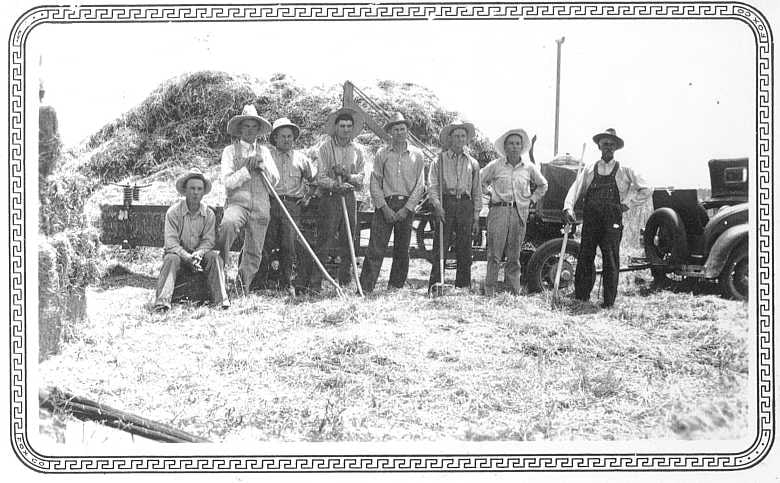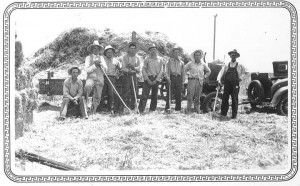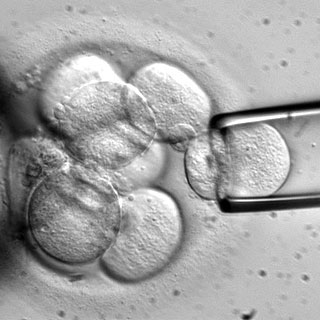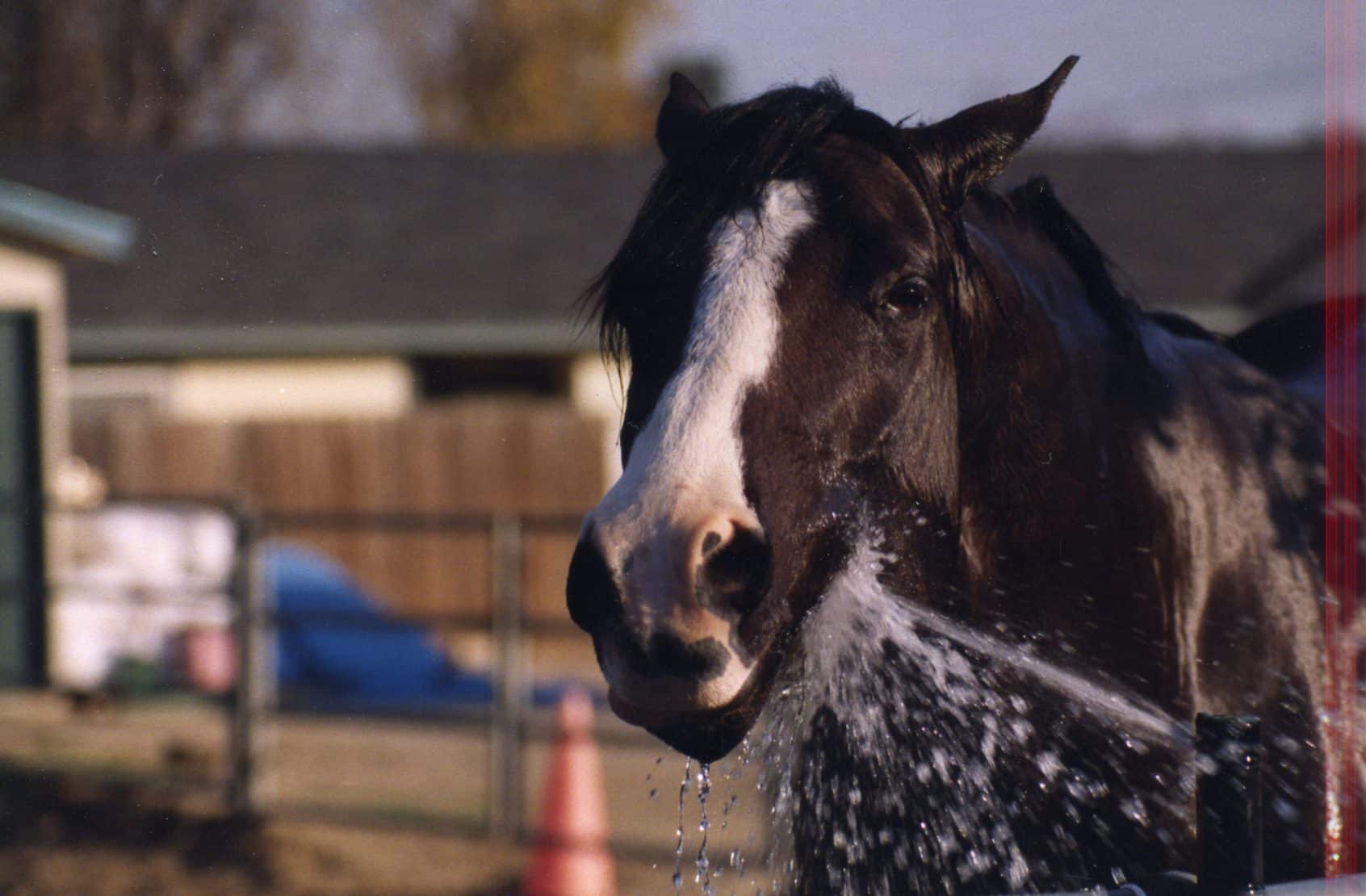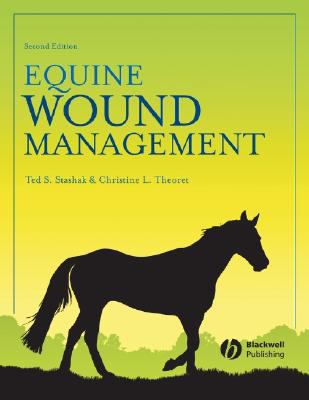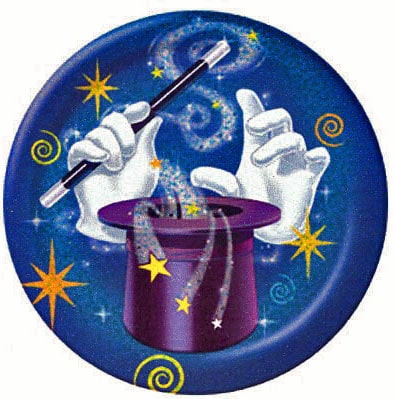Maybe you’ve noticed, but nutrition seems to be a bit faddish. What’s hot one year isn’t such a big deal the next. There’s always a new, hot trend in nutrition.
There’s been a lot of interest recently in what are known as essential fatty acids, which, as in most things in medicine, get abbreviated, in this case, as EFA’s. Since a reader asked, I thought that I’d give you a quick look at EFA’s, and what they are, and what they might be able to do – and what they do, and what we don’t know about – for horses.
First question: “What’s a fatty acid?” That one’s easy. Fatty acids are the building blocks of the fat in the horse’s body, as well as the fat in the food that horses eat. Fatty acids have many uses, including for energy storage. The body can break down and use fatty acids for energy if there’s not enough blood sugar.
So, what makes a fatty acid, “Essential?’ Easy as well – essential fatty acids cannot be made in the body, thus, they have to be eaten. They are required in the diet. Fatty acids are termed essential when the body can’t do without them AND the body can’t make them on its own. The biggies in the EFA department are linoleic and linolinic acids, and these fats, which are found in plants, are used to build the specialized fats that everybody is talking about, called omega-3 and omega-6 fatty acids. Plants, of course, are what horses live on.
 In simplistic terms, omega 3 are supposed to be the “good guys.” In human medicine, they’ve been given credit for anti-inflammatory and anti-blood clotting actions, lowering cholesterol and triglyceride levels, reducing blood pressure, reducing risks and symptoms for other disorders including diabetes, stroke, rheumatoid arthritis, asthma, inflammatory bowel disease, ulcerative colitis, some cancers, and mental decline.
In simplistic terms, omega 3 are supposed to be the “good guys.” In human medicine, they’ve been given credit for anti-inflammatory and anti-blood clotting actions, lowering cholesterol and triglyceride levels, reducing blood pressure, reducing risks and symptoms for other disorders including diabetes, stroke, rheumatoid arthritis, asthma, inflammatory bowel disease, ulcerative colitis, some cancers, and mental decline.
On the other hand, omega 6 fatty acids get tarred as being the bad guys, but, in fact, they’re as “essential” for a horse’s diet as are their omega-3 brothers. They get their “bad” reputation from being pro-inflammatory, that is, excessive consumption of omega-6 fatty acids is associated with arthritis, inflammation, and cancer: in humans.
CHEMISTRY NOTE: “Why are they called omega?” you ask. It’s a chemistry thing. If you’re really interested (I’m really not) CLICK HERE.
“Oh, dear!” state those who worry a lot. “Since these are essential, and since omega-6 fatty acids are bad guys, just what, exactly do I have to do to make sure that my horse has enough fatty acids, and especially enough of the good ones? ”
So I’ll tell you. Feed him a good quality forage. Or let him eat some pasture grass.
Tell everyone.
You see, it’s not only important to have omega-3 and omega-6s in your horse’s diet – I mean, it’s pretty much impossible not to have them in his diet. Just about any type of decent horse diet seems to do a great job filling a horse’s essential fatty acid requirements, even though, to be honest, nobody knows at this point exactly what those requirements are. And it not only fills the horse’s fatty acid requirements, but it also does so in what-seems-to-be the proper balance (“balance” being a real buzz word in the human fatty acid world). In fact, horse forage contains almost exclusively omega-3 fatty acids, and everyone agrees that horses need more omega 3’s than omega 6’s. So, if you’re feeding your horse 20 pounds of good hay a day, your horse is eating 20 pounds of a fat source that contains significant amounts of omega 3 fatty acids every single day.
Pasture grasses and hay, even though they don’t have much fat in them – horses normally exist on something of the ultimate low-fat diet – do have some fat in their diet. Fresh grass, depending on its maturity, will vary between 3% to 5% fat, with about 40% to 55% omega- 3’s, and hay, depending on maturity, might vary between 1% and 3% fat, and will contain 18% to 35% omega-3’s. And both have much more omega-3’s than they do omega-6’s. It’s the other stuff that we feed to horses that can become a problem, EFA-wise. Corn, oats, and other cereal grains are higher in omega-6’s than omega-3’s, which is just one more reason why it’s probably not best to feed a horse a lot of grain (as if you needed other reasons besides the fact that feeding grain is associated with ulcer, colic, acidic intestinal environments, etc.). And If there’s too much omega-6’s in the diet, they can even inhibit the omega-3’s.
Adding fat to horse diets has become quite popular in some circles, both as a way of adding calories, as well as a way to treat conditions such as polysaccharide storage myopathy (PSSM – CLICK HERE to read about special diets for PSSM, and other conditions). Rice bran, flax seed, soybean and canola oils – good fat sources, all – have more omega-3 than omega-6. Corn oil has more omega-6, and probably isn’t the best choice to feed to horses, from an omega perspective. Flax seed oil is the most concentrated plant source of omega-3 fatty acids, and it’s been studied a bit in horses (more on that, as you read on).
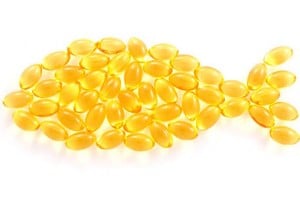 WHAT ABOUT FISH? Oh, in case you wondered, fish oils are a really good source of omega-3’s. In fact, some studies show that they are the best source of omega-3’s for horses (CLICK HERE). The problem is that many horses don’t really like the taste of fish oils (with horses, it’s always something). Which is probably one reason why you never see horses staring hungrily at oceans, rivers, or lakes.
WHAT ABOUT FISH? Oh, in case you wondered, fish oils are a really good source of omega-3’s. In fact, some studies show that they are the best source of omega-3’s for horses (CLICK HERE). The problem is that many horses don’t really like the taste of fish oils (with horses, it’s always something). Which is probably one reason why you never see horses staring hungrily at oceans, rivers, or lakes.
Anyway, for horses, given all of the potential benefits – anti-inflammatory, and such – there’s been some effort devoted to seeing if fatty acid supplementation is of some health benefit to them. And there’s some evidence that, in some circumstances, there might be. So, for example, you’ll find a study that shows that in horses with chronic lower airway inflammation, additional EFA’s to the diet helps a bit, in addition to a low-dust diet (CLICK HERE). Or that supplementation with flax seed helps horses with allergies to biting flies (CLICK HERE). For what it’s worth, the biting flies study also showed that flax seed supplementation alters the fatty acid profile of hair, too (people have long fed ground flax seed to horses in an effort to improve the hair coat). In stallions, EFA supplementation has been shown to have positive effects on semen quality, and especially in subfertile stallions (CLICK HERE). On the other hand, when pregnant mares were given flax seed and fish oils, the milk changed, but that didn’t help the foals any (there wasn’t any increase in number of antibodies in the colostrum, milk, or foal’s blood serum – you can CLICK HERE to read the whole darn PhD thesis).
And then there are the human studies.
In humans, there have been some recent studies that must have been really disappointing for those enthusiastic about fatty acids and fish oils. So, for example, a 2018 review that included the findings of 79 studies and involved more than 112,000 people found no evidence that increasing consumption of alpha linolenic acid (ALA) and a couple of long-chain omega-3 fatty acids enhanced heart health or protected against all-cause death or cardiovascular events. Unfortunately, it seems to be the same with fish oil supplements (and Vitamin D).
Horse studies are usually pretty small, but I think it’s pretty safe to say that feeding something like flax seed – or even fish oil – is very safe, and essentially free of negative side-effects. And while feeding flax seed is cheap enough that’s certainly not the case for designer supplements, many of which are flax seed based anyway. You can decide how much money you want to spend, I guess.
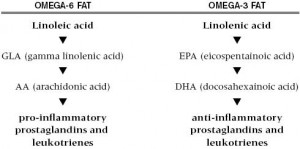 In addition, when it comes to EFA’s, more is not necessarily better. In fact, trying to get rid of inflammation is not only impossible, but it’s also not necessarily a good thing. Inflammation and anti-inflammation work together, and inflammation is an important part of the tissue repair process, particularly in acute injuries. Just dumping large amounts of EFA’s into a horse has even been shown to increase the inflammatory response in yearling horses (CLICK HERE).
In addition, when it comes to EFA’s, more is not necessarily better. In fact, trying to get rid of inflammation is not only impossible, but it’s also not necessarily a good thing. Inflammation and anti-inflammation work together, and inflammation is an important part of the tissue repair process, particularly in acute injuries. Just dumping large amounts of EFA’s into a horse has even been shown to increase the inflammatory response in yearling horses (CLICK HERE).
There’s more on the horizon when it comes to EFA’s, too. Whatever their health benefits for the horse, omega 3 fatty acids are broken down by the horse’s body into two primary compounds, eicosapentaenoic acid (EPA) and docosahexaenoic acid (DHA). My guess is that it won’t be too long before there will studies in horses on the effects of feeding those compounds directly, instead of just feeding fatty acid supplements. The marketing potential seems limitless.
 So, as of now, the bottom line is that the true implications of giving horses lots of omega-3 fatty acids on specific functions in the horse have yet to be fully fleshed out. In the normal horse diet, there’s something along the lines of a quarter pound of EFA’s a day, so it’s not like he’s not getting his share. Still, when it comes to omega-3’s and potential health benefits for your horse, there’s plenty of promise, some positive results, and, happily, if you want to give it a try, it shouldn’t be particularly hard or even expensive to add them to your horse’s diet.
So, as of now, the bottom line is that the true implications of giving horses lots of omega-3 fatty acids on specific functions in the horse have yet to be fully fleshed out. In the normal horse diet, there’s something along the lines of a quarter pound of EFA’s a day, so it’s not like he’s not getting his share. Still, when it comes to omega-3’s and potential health benefits for your horse, there’s plenty of promise, some positive results, and, happily, if you want to give it a try, it shouldn’t be particularly hard or even expensive to add them to your horse’s diet.

